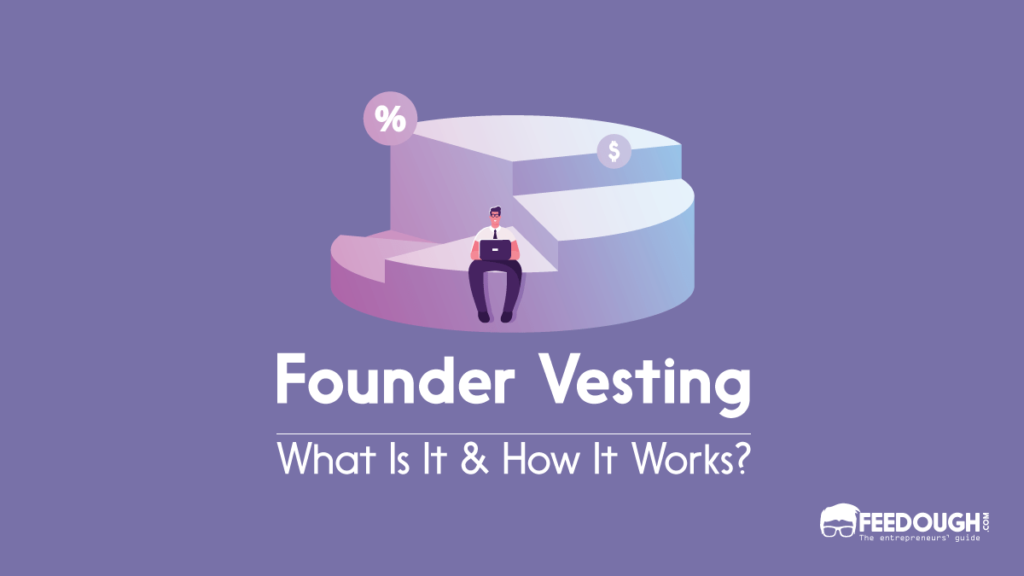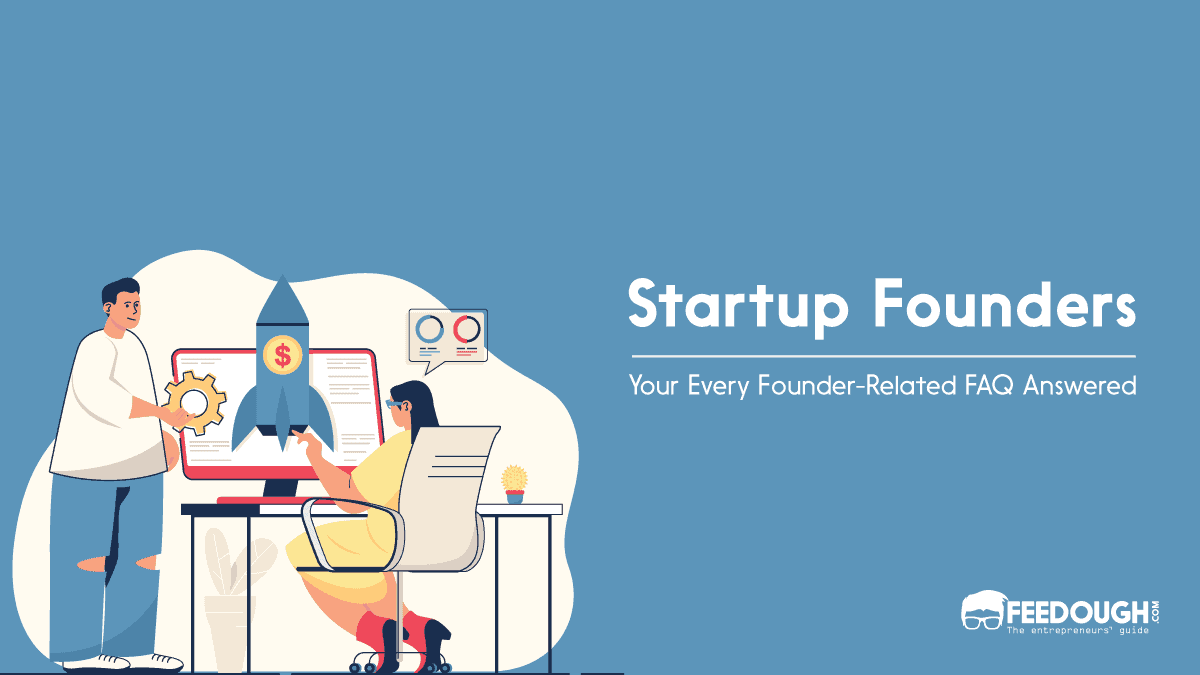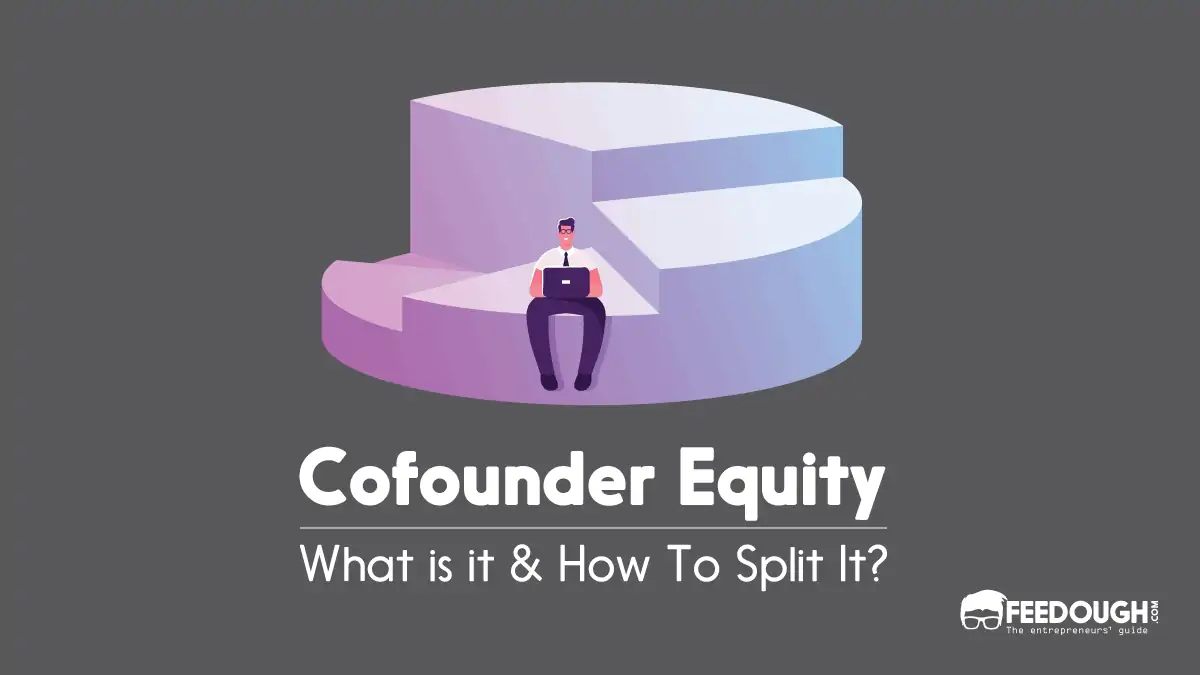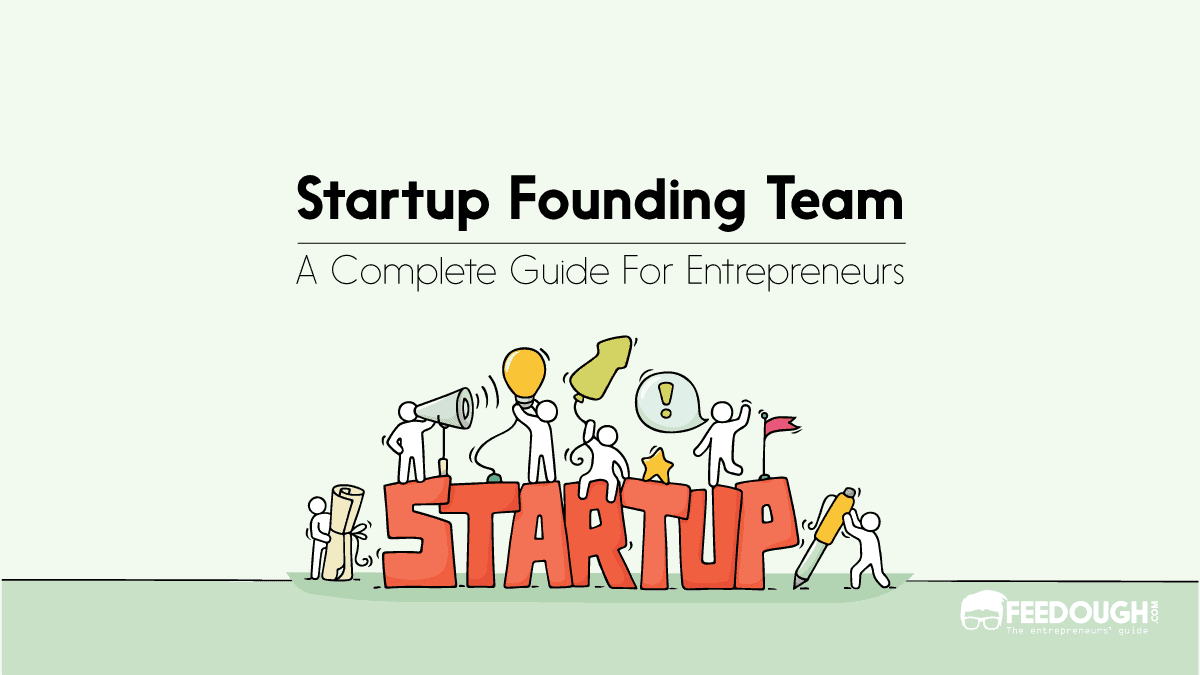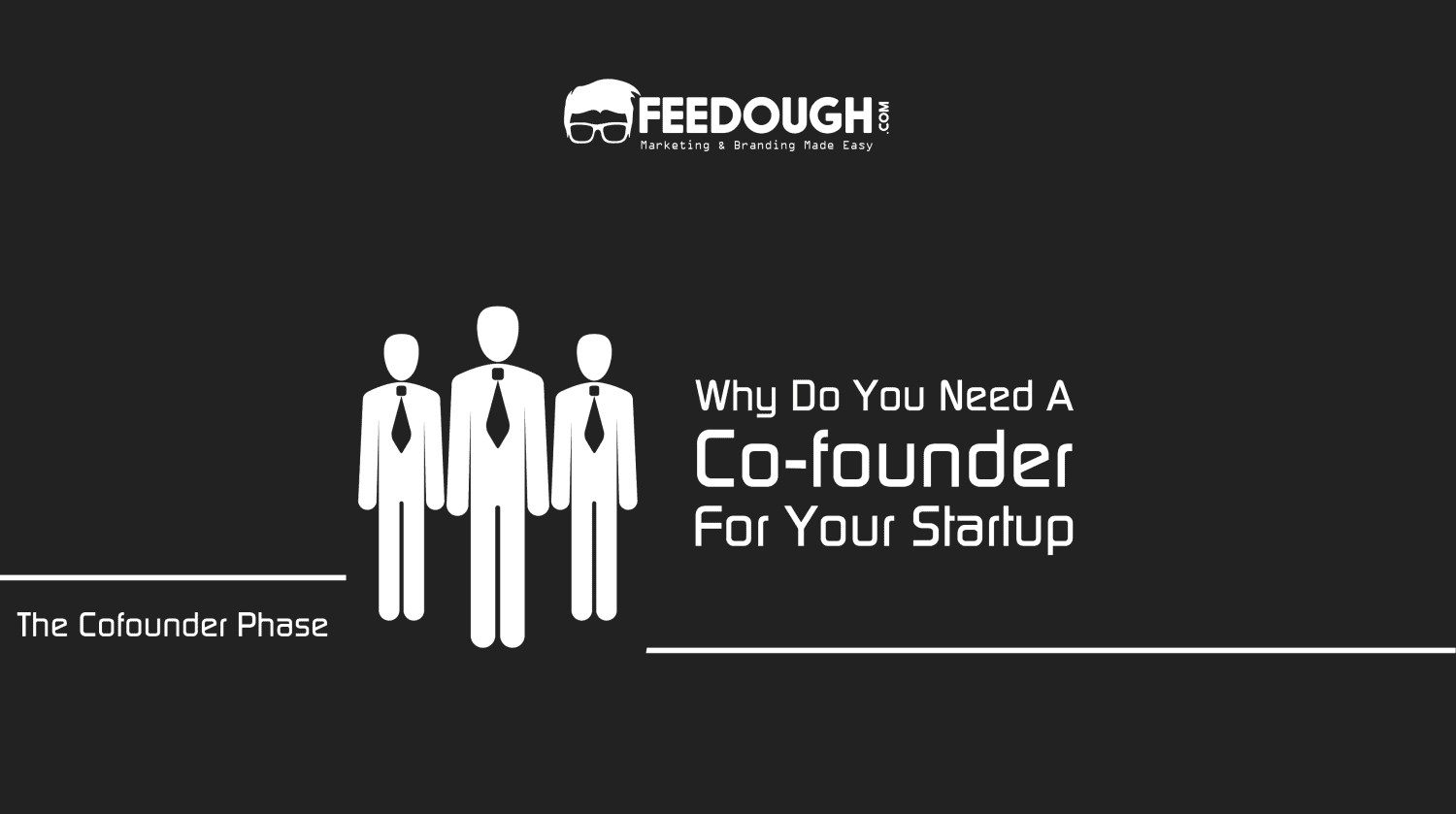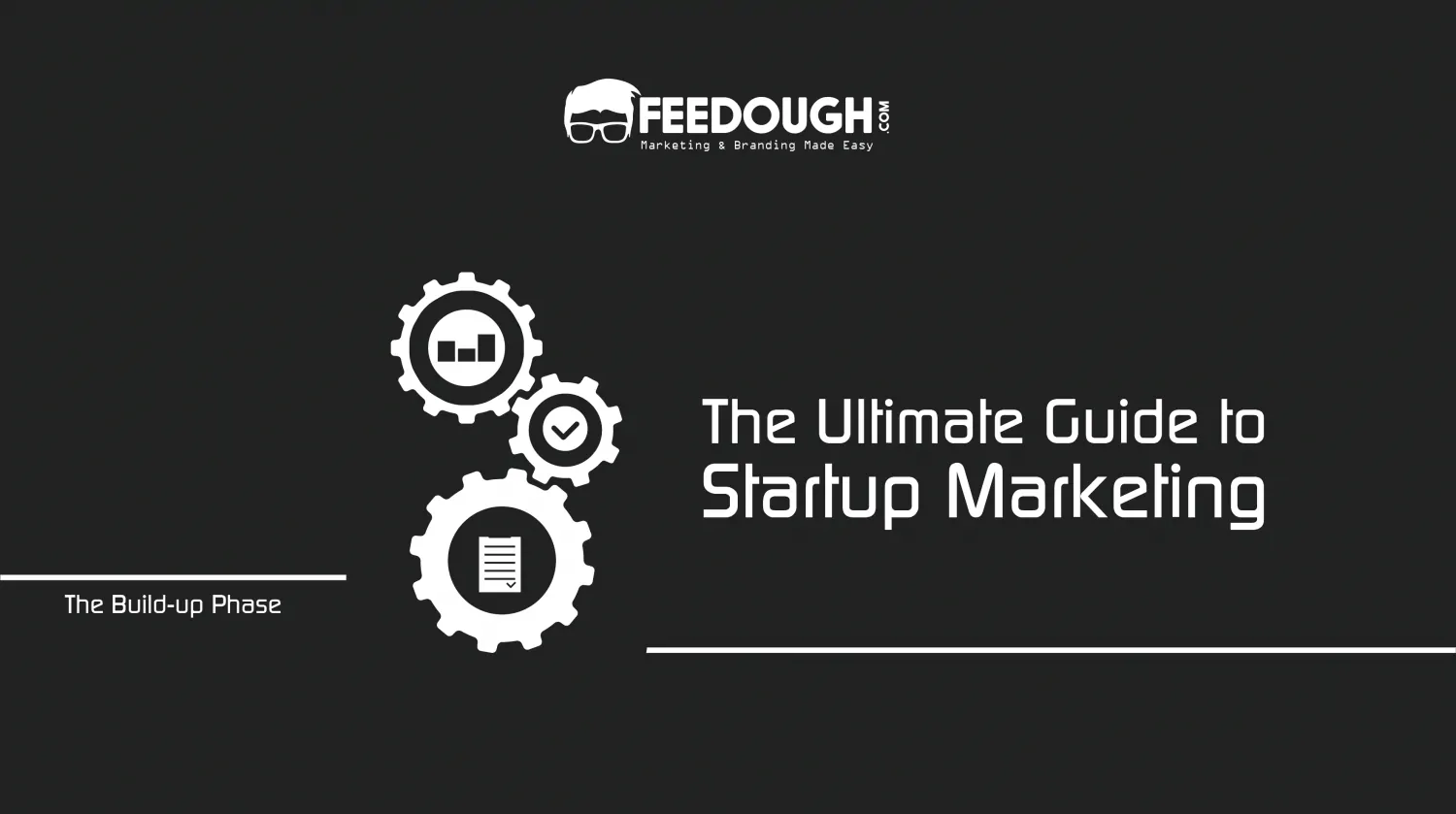The world of entrepreneurship requires you to plan for uncertainties. You cannot wait for some mishap to decide on the redressal method; you have got to stay on your toes and take precautions.
So, just after you have started with your business; just after your idea isn’t an idea anymore, you need to start thinking about all the sides of the story. No matter how sad, horrifying, or dumb the possibilities may seem, you have to be ready with your precautions.
Vesting is one of those preventive measures. It helps deal with the situation of a cofounder walking away. VCs also ask for a vesting schedule because a founder leaving early-stage is seldom easy to deal with. Not only will you be left with the burden of finding a new partner but also the risk of diluting your equity because they have the legal power not to give back the shares. Horrifying, isn’t it?
Vesting helps you manage this situation. So, let’s talk more about it.
What is Vesting?
Founder vesting is the mechanism by which business founders secure rights to their company’s shares without actually getting them, that is, on the condition of acquiring them gradually according to a pre-decided schedule.
If you opt for vesting, you won’t outright get your share in the company; these will rather be reserved for you to acquire in due course.
In simple terms, founder vesting refers to the gradual process of giving business founders ownership to their company’s shares. Founders earn full ownership of their shares gradually over the time decided in the founders agreement. This means that they have to stay at a company for a certain amount of time before they can own all of their equity.
One thing to know here is that vesting follows a schedule agreed on by all the parties, so no one can take your shares away unless you leave or have to leave the company. In other words, you will have to earn your share by working for the company for a pre-specified duration. If you fail to do so by any chance, the reserved portion (that is not acquired) is taken back.
Why Is Vesting Important?
Vesting is a clause in a founders agreement or shareholders agreement that gives the company the option to repurchase a shareholder’s unvested shares at a discount in the event that the founder terminates employment. An example of this might be if a company has a three-year vesting schedule for each founder. If a founder leaves the company after two years, then the company has the right to repurchase the unvested shares at a price equal to the price on a given day times the total number of unvested.
Although this seems harsh to new founders, having a vesting agreement is mandatory for new businesses as:
- It gives power to the company to take shares back from the shareholders if they don’t fulfill their side of the bargain.
- It protects the company from losing a considerable part of its equity when a shareholder leaves without fulfilling its duties.
- It prevents other founders from the “free rider” problem that would arise if a founder leaves early without contributing much to the company.
Let’s understand this better with an example.
Let’s say founders A and B start a company named XYZ. They manage to raise some capital against 10% of the equity of the company. The rest 90% is divided equally between them without vesting. Now, it’s been a year since the company started. They are scaling rapidly; everything is going well, but A decides to leave one day. Founder B, the investor, and the top executives are all worried about how they will fill A’s shoes.
However, we have one other problem here. A is not legally responsible for giving his equity share (a whopping 45%) back. So, when taking on a top-notch employee to replace A, they have to dilute B’s equity and even that may not be sufficient. Also, if the company scales up in the future, A will benefit without contributing to the business; that is, A will be a free-rider.
Now, consider another scenario where A and B opted for vesting. So, they don’t get their shares outright; they will be granted over four years. They decide that each receives a percentage of their equity unlocked every year for the next four years; that is, 25% of each of their total equity (45%) is unlocked each year.
If A leaves now after one year, they get only 25% of their share, around 11.25% of the total equity. This gives A the incentive to stay more and offers some protection to B from too much dilution in case A leaves, and they need to hire someone. Also, investors feel assured now that the chances of a founder leaving and the company shattering are less.
Terms Related to Vesting
To understand how vesting exactly works, you need to know a few basic vesting terms:
- Vested Stock: Stocks that cofounders acquire in exchange for their services and goodwill towards the business are called vested stocks. These cannot be taken away usually even after you leave the company.
- Unvested stock: They are the stocks not yet acquired by the cofounders but will be in due course if they keep working with the company. Unvested shares get converted into vested shares with time; that is, the portion of unvested shares decreases, and vested ones increase. However, if a founder leaves before the vesting duration is over, further vesting of these stocks will be stopped.
- Vesting schedule: A vesting schedule states the timeline when the share forfeiture restrictions lift from your shares partially and fully. Consider it as a plan that determines the portion of your company’s share you own at a particular point in time. It describes how much of your unvested shares will convert into vested ones at what point in time.
- Cliff: Cliff is the minimum time for which you need to stay in the company to acquire any stocks. It is the period after which your shares start vesting.
- Reverse dilution: Reverse dilution happens when the stocks reserved for a shareholder are returned to the company after they have violated the agreement and left. This act increases the ownership of all the other shareholders in the company.
How does Vesting Work?
The vesting is a practice in which a founder’s equity in a startup is granted in stages over time.
Let’s understand the nature and working of a vesting clause using an example. Following is a typical vesting clause in a founders’ agreement.
“Each Founder’s percentage interest in the company will vest pursuant to a four (4) year vesting schedule beginning vesting start date, which will vest 1/48th per month in exchange for continuous and consecutive service to company. Additionally, the vesting schedule will be subject to a one (1) year cliff. If a percentage interest in company is owned by non-Founders during the vesting schedule, each founder will immediately receive 12/48ths of the percentage interest. If a Founder who is subject to a vesting schedule departs company prior to full vesting of his or her shares, the remaining portion of any unvested shares will be returned to company. Vesting will occur on the basis of following schedule: Until and through (first vesting date) neither founder’s shares will vest On and not before (first vesting date) 25% of each founder’s shares will vest On and not before the (second vesting date) 50% of each founder’s shares will vest On and not before the (third vesting date) 75% of each founder’s shares will vest On and after the (fourth vesting date) i.e. on end date each founder will be 100% vested.”
This is a uniform four-year-long monthly vesting schedule with a one-year cliff. It states that an equal portion of a founder’s share will vest each month in such a way that the shares are fully vested in four years or 1/48th of their shares will vest each month for the next four years.
However, this clause also talks about a one-year cliff. The cliff period is the time when your vesting schedule is in sleep mode and is not in operation. This implies that no share will vest in the first twelve months after your agreement comes into being. The whole 25% of your shares will vest together on the first anniversary of the agreement.
After this, the vesting schedule operates normally, and 1/48th of your shares vest each month. This way, at the end of the first year, you have 25% of your shares vested, 50% at the end of two, and 100% at the end of four.
If you leave the company before the period of vesting (4 years usually) ends, all your unvested shares will be forfeited or bought back at a nominal price. While you can keep your vested shares, the unvested ones disappear into ether, increasing the other shareholders’ percentage ownership. This is called reverse dilution.
Suppose you started a company with three other people, and each of you gets a 25% share in the company. These shares will be vested according to the typical 4-year schedule with a one-year cliff. So, each of you will be 25% vested by the end of one year and 37.5% vested by 18 months. This implies that everyone will own 9.375% of the company by the end of 18 months.
Now, if you decide to leave the company, you get only 9.375% of it. Further vesting of your shares will stop and your remaining 15.625% shares will be bought back by the company at a lower cost or at a fair market cost.
Usually, the remaining shares are distributed to other shareholders based on their existing shareholding ratios. That is, everyone else will get extra 5.208% shares.
One thing you need to remember here is that the vesting schedule is dormant for the first year. So, if you leave after 11 months, you receive nothing.
What if You Go for Fundraising before the Vesting Period is Over?
Investors, especially early-stage VCs and angels, ask you to draw a fresh vesting clause in the shareholders’ agreement. A typical vesting clause in a shareholders’ agreement looks like this.
“All stock and stock equivalents issued after the Closing to employees, directors, consultants, and other service providers will be subject to vesting provisions below unless different vesting is approved by the majority (including at least one director designated by the Investors) consent of the Board of Directors (the “Required Approval”): 25 percent to vest at the end of the first year following such issuance, with the remaining 75 percent to vest monthly over the next three years. The repurchase option shall provide that upon termination of the employment of the shareholder, with or without cause, the company or its assignee (to the extent permissible under applicable securities law qualification) retains the option to repurchase at the lower of cost or the current fair market value any unvested shares held by such shareholder.”
This clause is similar to the one in the founders’ agreement. However, unvested shares of the leaver are typically bought back at a small pre-decided price instead of being forfeited.
While drawing the shareholders’ agreement, you may also ask for a portion of your shares to be vested at the time of enforcement of the agreement in exchange for your long contribution to the company.
“The outstanding Common Stock currently held by ______ and ______ (the “Founders”) will be subject to similar vesting terms provided that the Founders shall be credited with [one year] of vesting as of the Closing, with their remaining unvested shares to vest monthly over three years.”
If you find a good buyer for your company and decide to sell it before the vesting period is over, you may have to stay back and work for the remaining duration. However, if the acquiring company fires you during this time, the vesting of your shares will get accelerated.
“In the event of a merger, consolidation, sale of assets, or other change of control of the company and should an employee be terminated without cause within one year after such event, such person shall be entitled to [one year] of additional vesting. Other than the foregoing, there shall be no accelerated vesting in any event.”
Acceleration of shares is the automatic conversion of unvested shares into vested ones caused by certain triggers. Usually, this trigger is a merger or acquisition of the company.
There are two types of acceleration:
- Single trigger acceleration: When acceleration is caused by one trigger, usually, merger and acquisition, it is a single-trigger acceleration
- Double trigger acceleration: When it is caused by two triggers, usually merger or acquisition followed by the new parent company dismissing the founders, it is a double trigger acceleration. The acquiring company changing the work location or significantly altering a founder’s role also qualifies as a trigger sometimes.
Usually, cofounders and investors agree on double trigger acceleration. This is mainly because the acquiring company wants the founders and key employees of the acquired company to stay, and help in the smooth transition of authority and consolidation of business. Unvested shares act as an incentive here.
You can bargain for single trigger acceleration, but keep in mind that this will make your business less desirable for a merger & acquisition. So, a double trigger acceleration clause with some flexibility will do you good.
The Bottomline
Now that you know how vesting works for cofounders, you must draw up the clause in your founders’ and shareholders’ agreement. We agree that businesses work on trust among the shareholders, but you don’t know what might happen in the future. Your cofounder may have to leave because of personal problems, health issues, and other obligations. Vesting facilitates the hiring of a replacement in such cases.
Remember that you don’t need to follow the typical vesting schedule. This is the most tried one but has its flaws. For instance, many startup founders feel that a four-year vesting schedule is useless because startups take around seven to ten years to start generating enough revenue and a founder leaving after four years will be disastrous. So, talk to your cofounders, discuss with experienced people, and then decide what kind of vesting agreement to enter into.
Go On, Tell Us What You Think!
Did we miss something? Come on! Tell us what you think about our article on founder vesting in the comments section.
A finance enthusiast, literature beau and lifelong learner. Working her way up the success ladder and her personal philosophy textbook, Kavvya believes that a good conversation is worth more than a good book. When not working, she can be found reading, writing and engaging in long walks.
